► CAR drives the Superb plug-in hybrid on a Grand Tour
► Estate models only offered for now
► Long battery-only range, excellent all-round efficiency
Powering up the famously demanding Furka Pass in Switzerland, the scale of the improvements over the previous-generation model finally come home to roost. The Skoda Superb iV plug-in hybrid‘s bigger battery pack, the more composed suspension and steering, and an overall sense of agility nudge this back towards the top of the class. But I’m getting ahead of myself here.
As a team, we’ve already driven the 2024 Skoda Superb petrols and diesels in hatchback and estate forms, so we know a thing or two about the Czech firm’s flagship car. I’m also an unashamed fan, having driven all over Europe in all four of the post-war iterations – for me, it’s the go to choice if you want to cross a continent with the mimimum of fuss and maximum of comfort.
I still vivid memories from a mid-2000s drive back from Poland in a 2.0 TDI with the cruise set at 120mph in an overnight dash through Germany. Fuelled purely by service station coffee and sugar-laced snacks, I managed to grab my ferry back to the UK hours ahead of schedule. It would be the first of many similar trips, which culminated last year, finding myself in a similar situation. On the way to Prague, managed to sail through the limiter on the way to more than 170mph in a 280 L&K. Thank you, Skoda.
Twenty years on from that first encounter, it was only right that when Skoda needed a Superb iV bringing back to the UK from Milan, I was the person for the job. I find the best way of evaluating of evaluating a new car is to intensively use it on a long trip, where all of its annoyances can be stress tested at the coalface – probably above and beyond how we test cars normally. But needs must; if it bothers me at 130km/h on the autostrada, it’s likely to really get under my skin on a snarled-up A1 heading north out of London. Day after day.
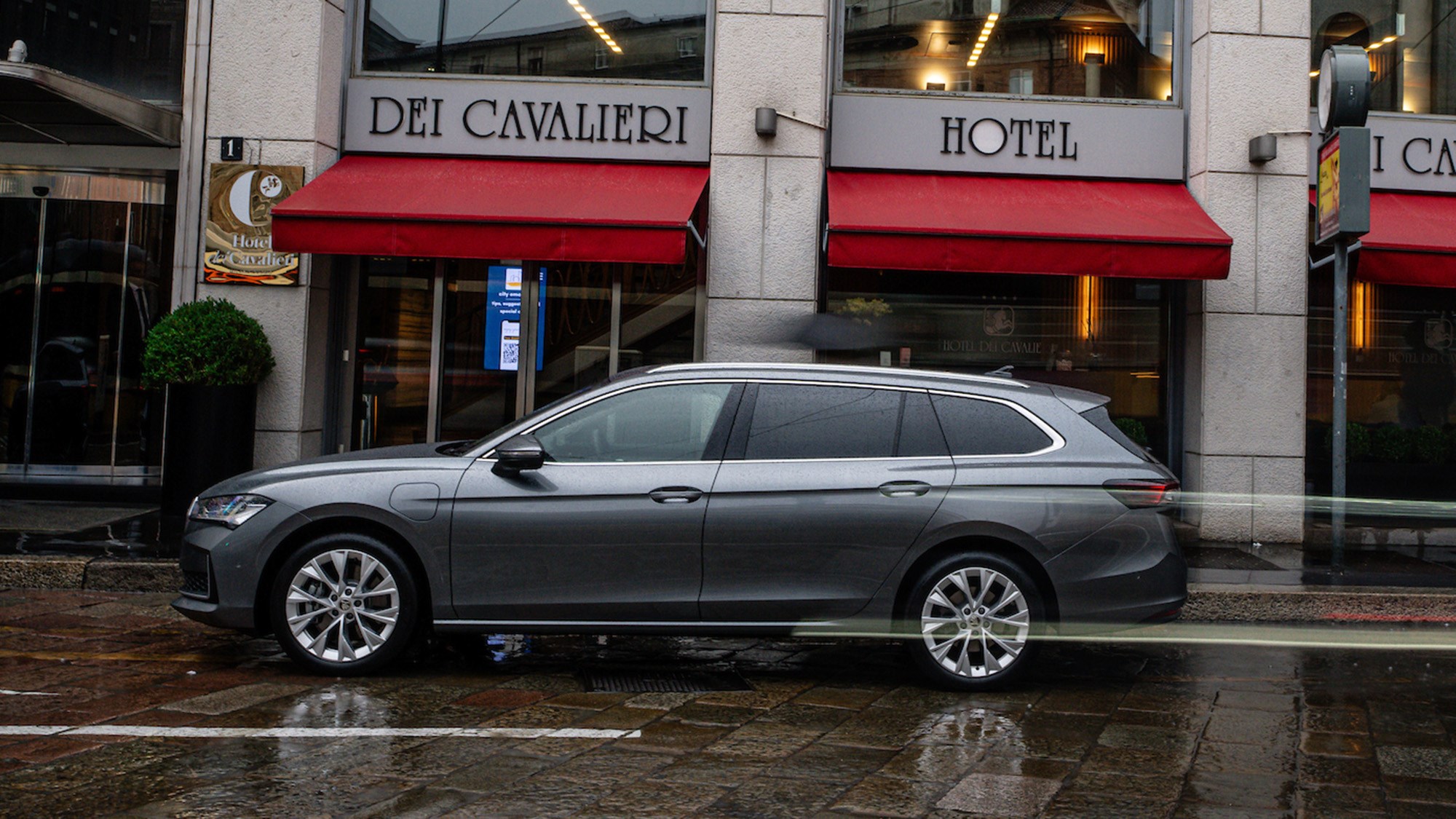
At a glance
Pros: Comfortable ride, huge interior, excellent battery range
Cons: Generic styling lacks razor-edged sharpness of previous model
What’s new?
We’ve already tested the Superb hatchback and estate versions in ICE-powered form, but this is my first chance to try the PHEV version. Heart of this is the efficient 1.5-litre 148bhp TSI four-cylinder petrol engine, which is mated to a six-speed DSG transmission. On top of that is a 116bhp electric motor, which combines for an overall power output of 201bhp. Given the car’s 1.9-tonne kerbweight, that little lot is going to have its work cut out delivering convicing outside lane performance.
A sizeable 25.7kWh battery pack goes someway to explaining the Superb iV’s generous WLTP all-electric driving range of up to 84 miles. As before, the e-motor can move the car alone or in combination with the engine, and the motor, which is separated from the engine by a clutch, is also used to start the engine. There’s integrated water cooling for the battery pack, and DC charging is also available.
This is good news, because it means that the Superb iV can be topped up at a public CCS rapid charger. It’s quick enough for a PHEV, with a peak charging speed of 50kW. That means it can be topped up from 10-80% in around 26 minutes, while even at home, the same battery refresh will take around 2hrs 30 minutes, costing less than £5 for a typical home charger on a decent tariff.
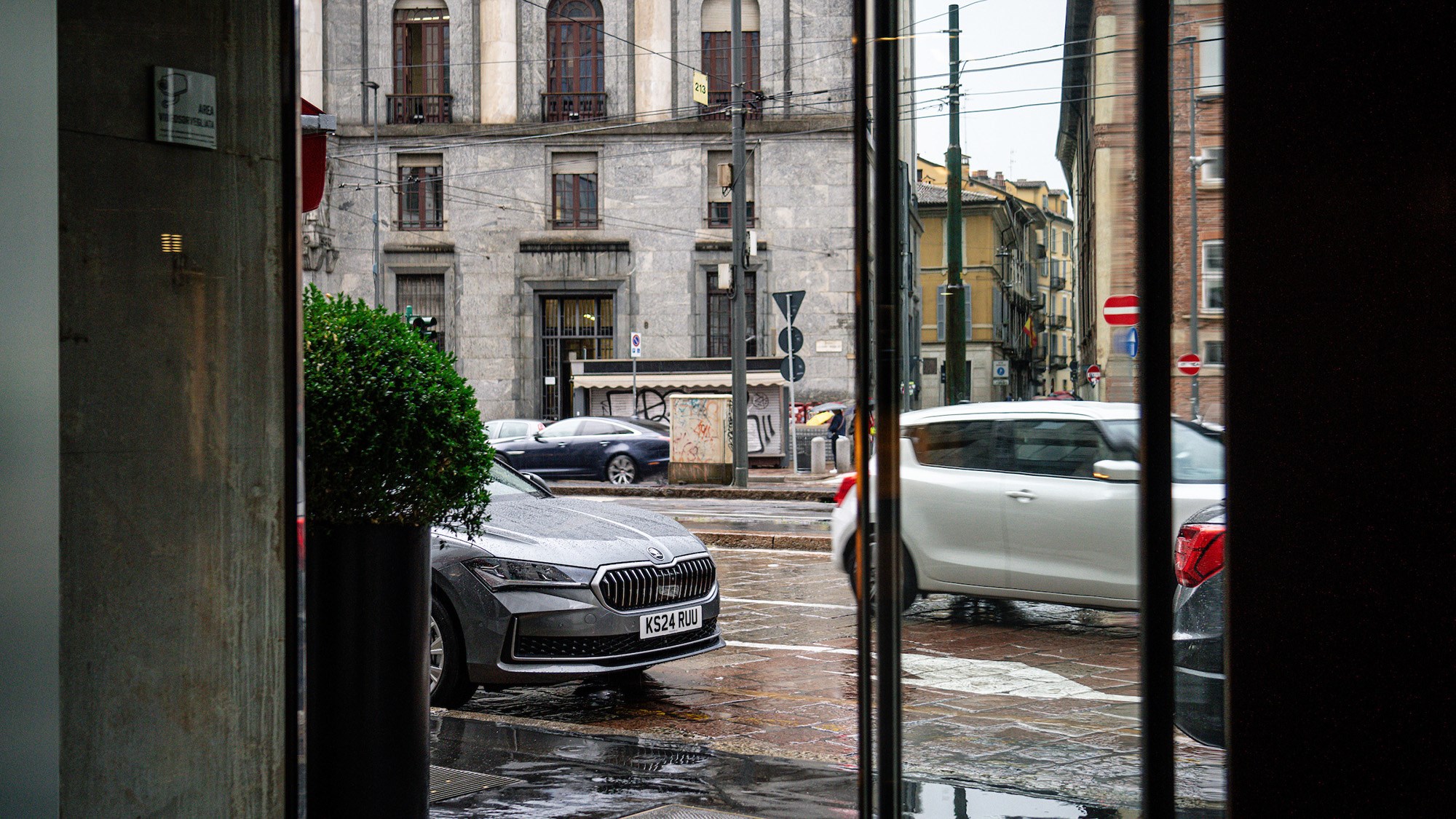
What are the specs?
Skoda is offering the Superb iV in estate form only, and in three trims – SE Technology, SE L and Laurin & Klement. Even the entry-level SE Technology comes well equipped, featuring LED headlights, privacy glass, heated front seats with massage function, 13.0-inch infotainment screen and that all-important on a long journey adaptive cruise control with traffic jam assist.
SE L adds larger 18-inch wheels, leather interior and electrically-adjustable front seats, while the range-topping L&K gains you dark chrome exterior trim, park assist and an even more advanced seat massaging system. Further options can be added in the form of equipment packs, while the interior comes in Loft, Lounge, Suite Black and (my favourite) Suite Cognac flavours.
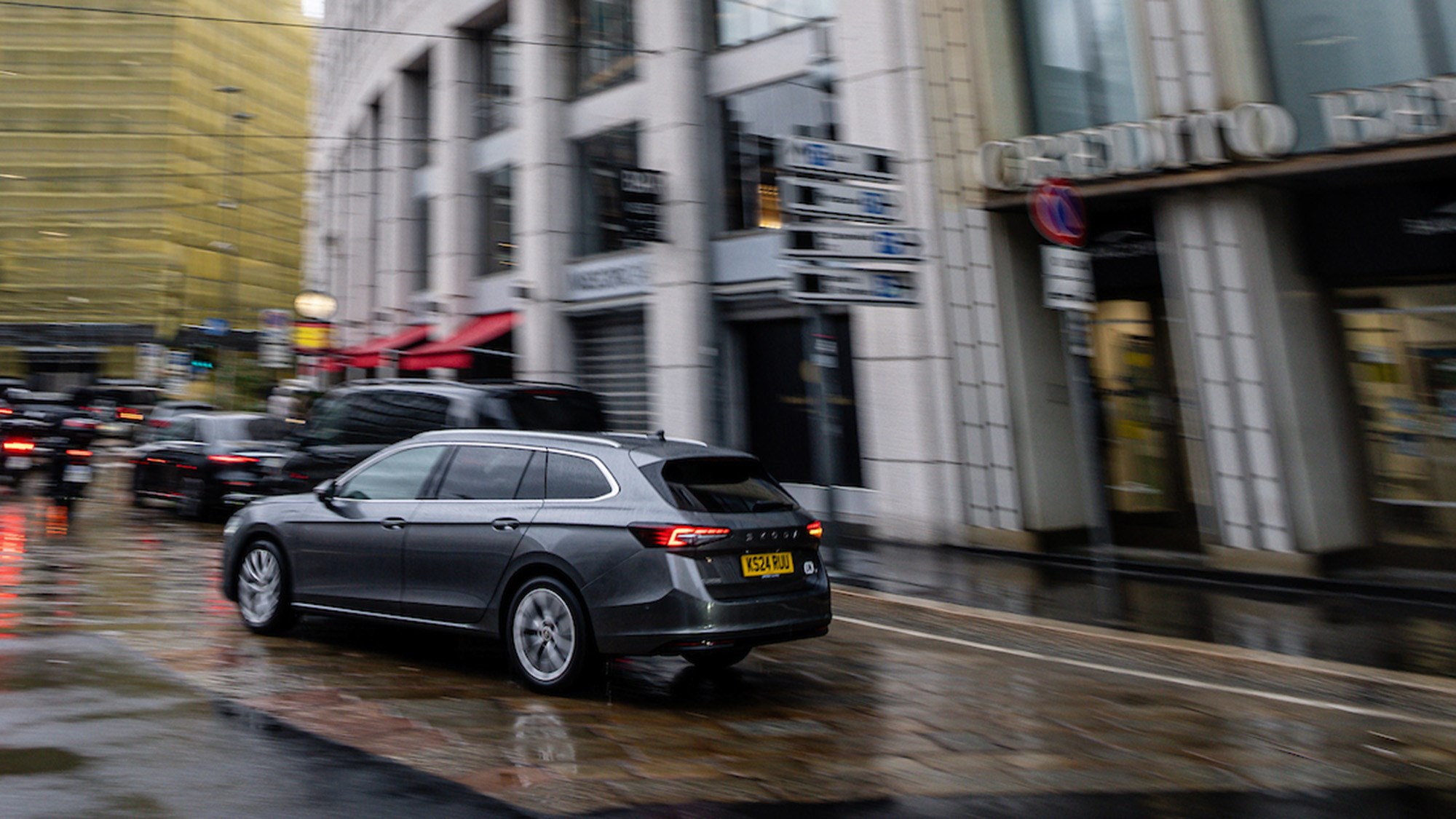
How does it drive?
My plan is to follow the famous Grand Tour routes favoured by the wealthy in centuries gone by. From Milan, it’s on to Lausanne, followed by Dijon, Reims and home via Calais. Today, it’s a straightforward drive you could loose off in a long day on the motorway, but back in the 18th century when Grand Touring hit its peak, it could take a year to make it home.
The phrase Grand Tour was made popular in 1670 when the travel writer Richard Lassels used it for his guidebook ‘The Voyage of Italy’, which was soon being emulated by the smart set. Generations of young aristocrats followed in their tracks in their horsedrawn coaches would bring back Renaissance art, Champagne, and other fineries, as well as a healthy appetite for cuture. Me, I’ll settle for a weekly shop in the Calais Auchan.
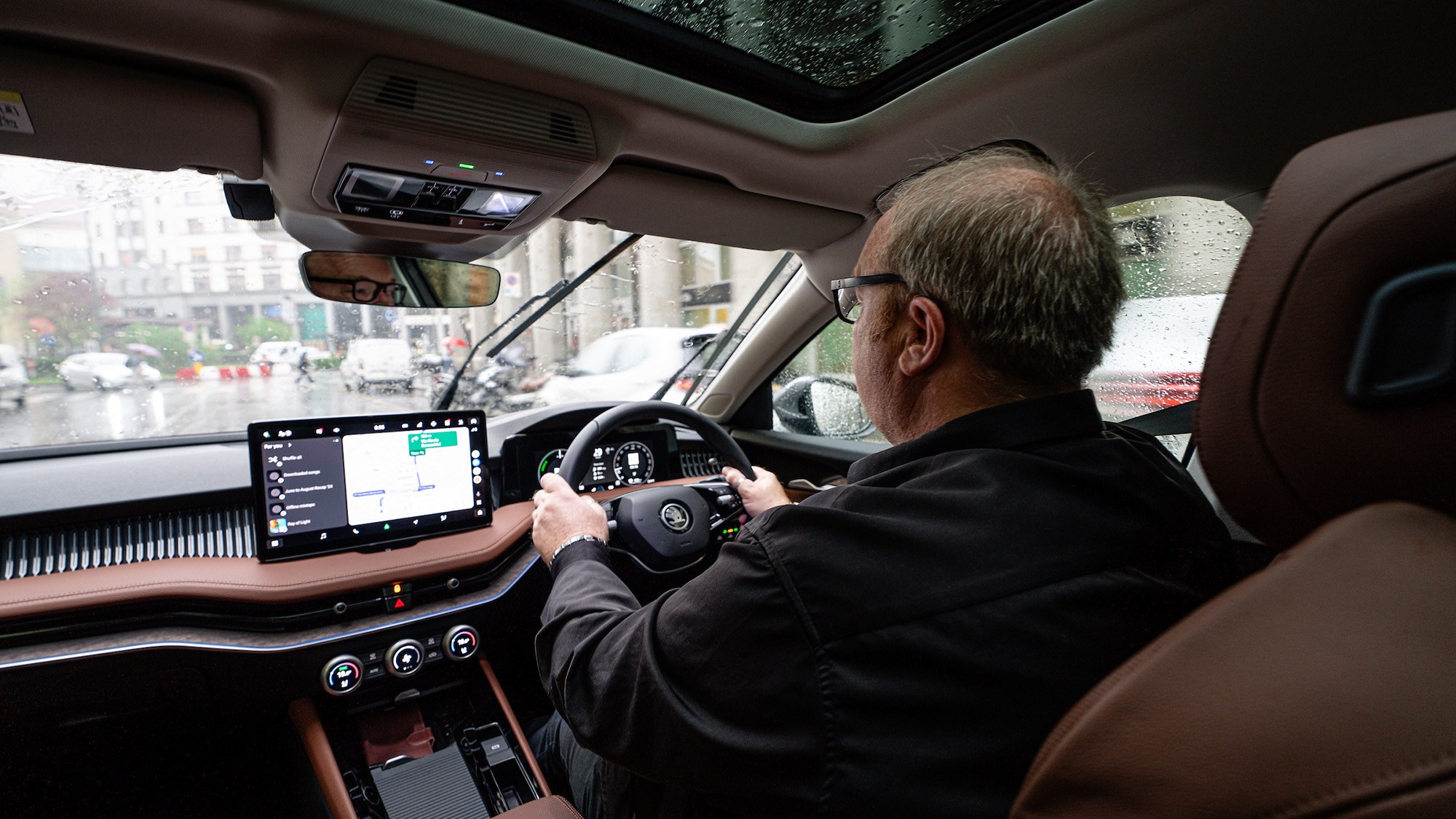
Settling into the Superb outside Milan’s Hotel Cavalieri, I don’t feel quite the same glamour. It’s throwing it down, and Italy’s penchant for aggressive city driving puts me a little on edge. But the Superb is at least homely and comfortable. I don’t have a strict journey plan, other than to get to Lausanne this evening, so just set the sat-nav for Andermatt, where I’ll have the option of hitting a few of my favourite Alpine passes.
Getting out of Milan is simplicity itself. The roads resemble Venice’s canal network, and I pity the poor pedestrians who are getting soaked more by passing cars than they are from above. The roads are generally smooth, but there are years of patchwork repairs to negotiate. But each sharp join in the blacktop is shrugged off by the Skoda’s absorbant suspension and soft-soap damping. Very impressive.
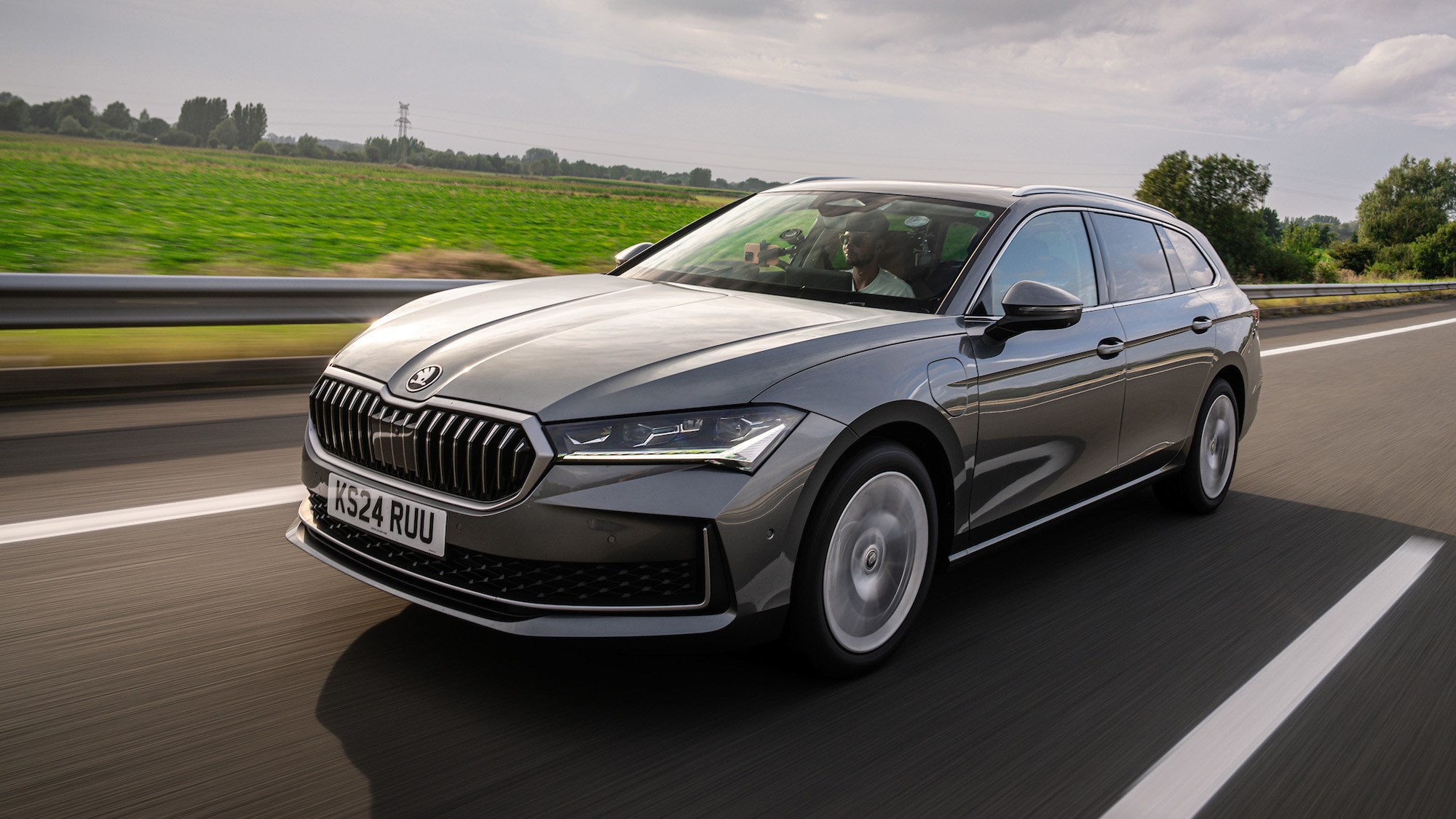
As the roads open up, and we head towards the autostrada, the weather doesn’t improve, but my feelings towards the Superb remain warm – in the city, it glided silently between traffic light stops, with the battery’s reserve seemingly deep enough to maintain a healthy level as I pass through my first toll booth and on to the autostrada.
Thankfully the weather lifts and the miles slip effortlessly by on the motorway. Hybrids don’t generally work their best on motorways, but the Skoda’s so comfortable here, it’s not really a problem. The engine might not make the most pleasing noise, sounding disappointingly strained under hard acceleration, but it recedes into a muted 2000rpm background hum, which is exactly what you want in a car like this.
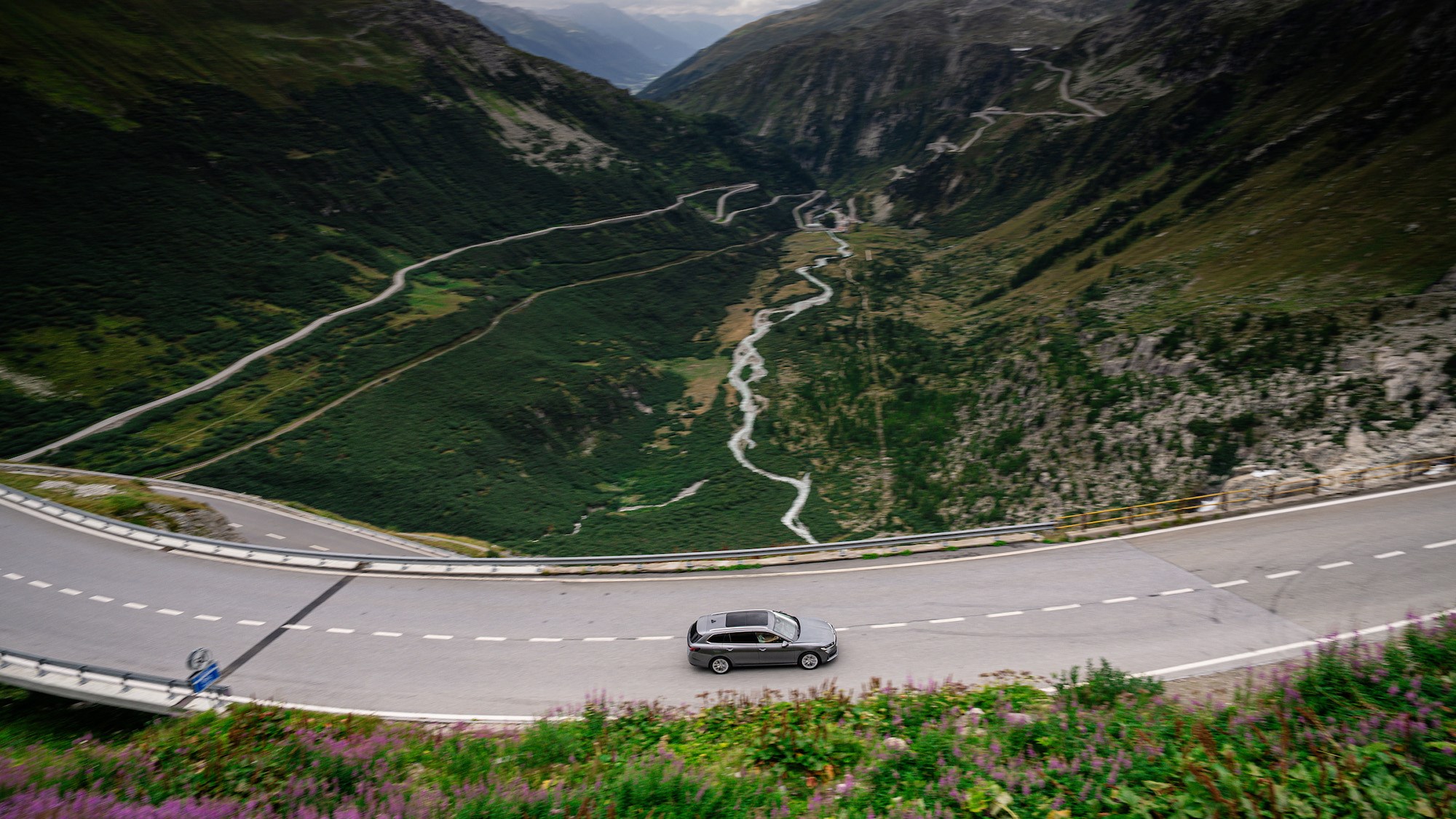
The motorway running doesn’t last long, though. I see my first sign for the passes I’m craving shortly after crossing into Switzerland, with the Gotthard Pass being the first of them on the way to Andermatt. I take the modern one, which wouldn’t have been an option for my adventurous forebears – at times I see the original cobbled road in the valley below, and shudder at the thought of using it in deep winter.
It’s a smooth and flowing route that carves an elegant path through the jaw-droppingly beautiful natural barrier between Italy and Switzerland, and the Superb shrugs it off nonchalently. There are three driving modes, which are accessible via the Hybrid icon on the infotainment system, but it’s currently in Normal and I see little need to put into Sport, such is its tight body control and excellent damping in its natural state.
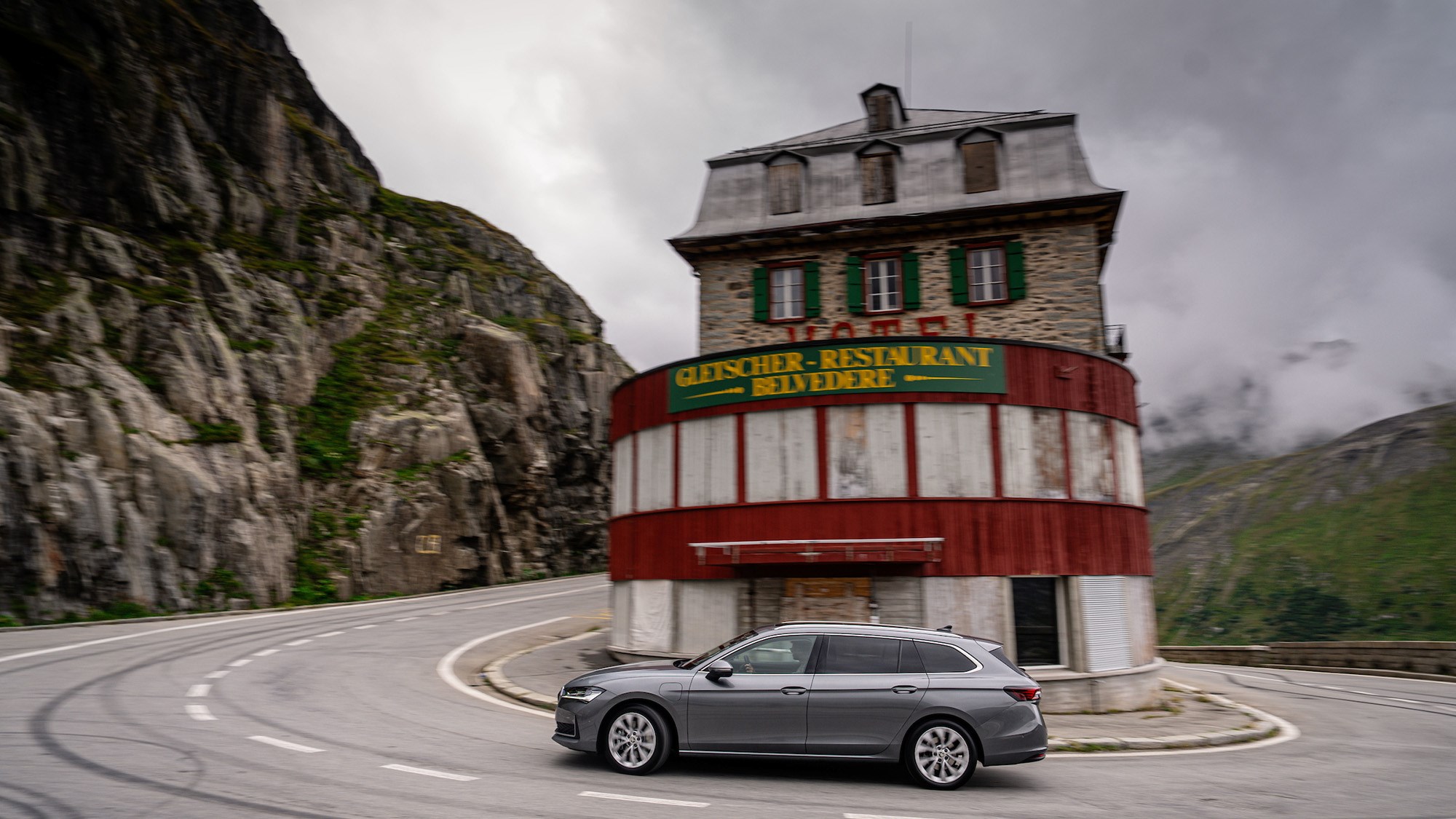
After that fun, Andermatt hoves into view, and whereas I’m normally ready for lunch at this point, I just press on towards Furka Pass. This one, made famous in the film Goldfinger – and its chase between Tilly Masterson’s Ford Mustang and James Bond’s Aston Martn DB5 – is more of a test for the Superb. It’s narrow and poorly-surfaced in places, and provides enough challenges to be genuinely fun.
Once again, it’s easy to see just how much the Superb has moved on compared with the previous generation. Where the last one needed to be put into ‘Sport’ mode to tighten the bodyroll and damping enough to stop it flopping at the first sight of a challenging road, this one steers with precision and turns in with just enough poise to satisfy keen drivers. So, although it’s not quite as entertaining in the Alps as a 3 Series, it’s night-and-day better than the old one.
After a quick coffee stop at the top of Furka, I return to Andermatt to take on the Oberalp and nearby Sustenpass, revelling in a quiet day on the high peaks, and a good car to do them in. Dropping down into my final valley of the day, gravity gives me a helping hand, by adding 15km of EV range through regenerative braking. That certainly aided a peaceful final motorway run of the day. By the time, I roll in to Lausanne, I’m ready for a beer, even if the Skoda’s bearly raised a sweat.
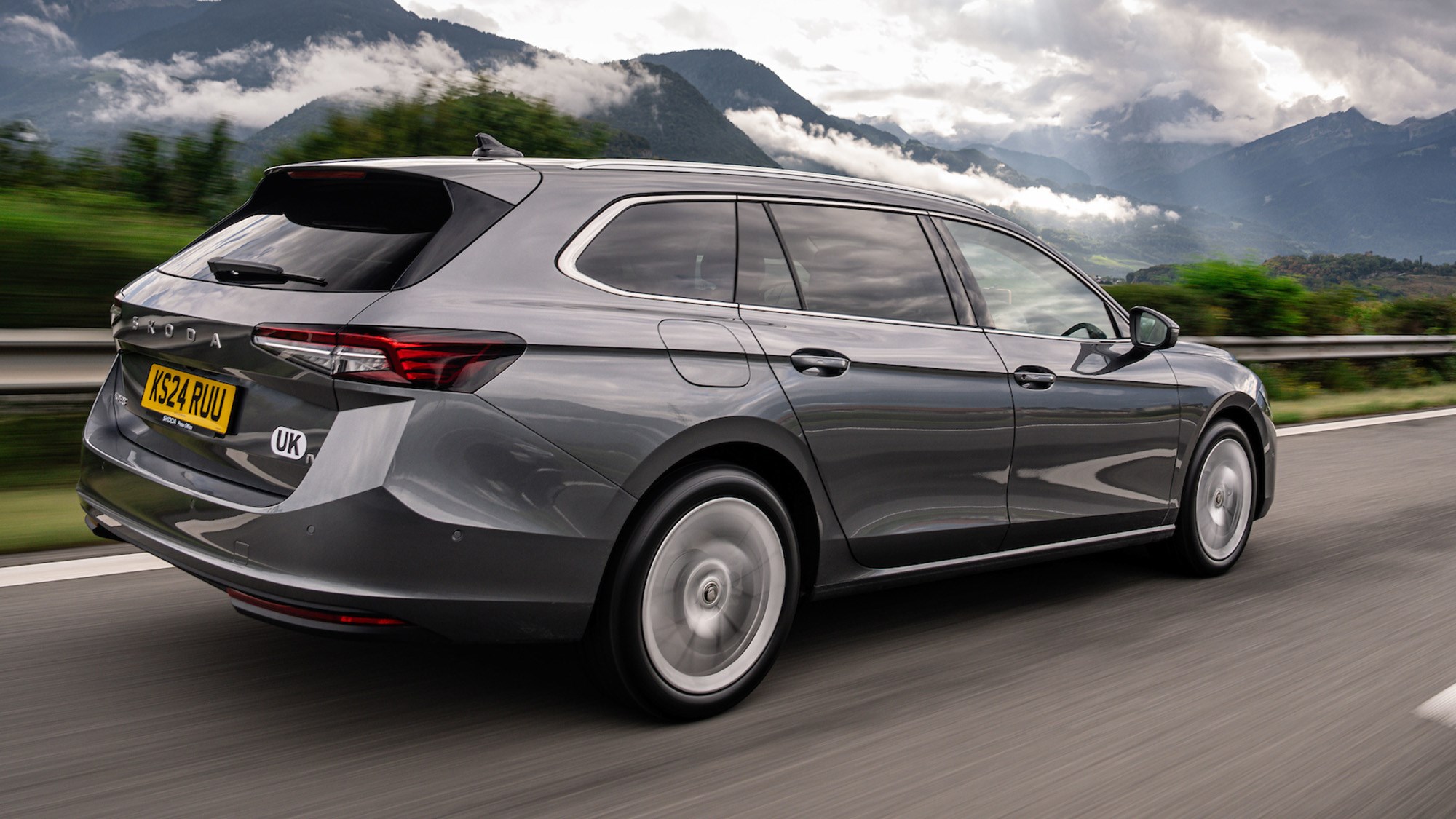
What’s the interior like?
Day two is going to involve a lot of motorway driving, giving me the perfect opportunity to learn more about how it all works for the driver. Firstly, it’s massive inside – a true indicator of the Superb’s passenger-loving, luggage-gobbling DNA. But as much as the lounging room in the rear is impressive, it’s here upfront that’s hitting all the right notes.
As I pass into France for an enjoyable run through the Jura towards Dijon, I switch on the seat massager (which is vastly improved over the last one, with several programmes to choose from), and kick back. There’s oodles of headroom, despite a glass roof, all the legroom I need and plenty of oddments space for all the phones, wallets and stuff that comes part and parcel of modern living.
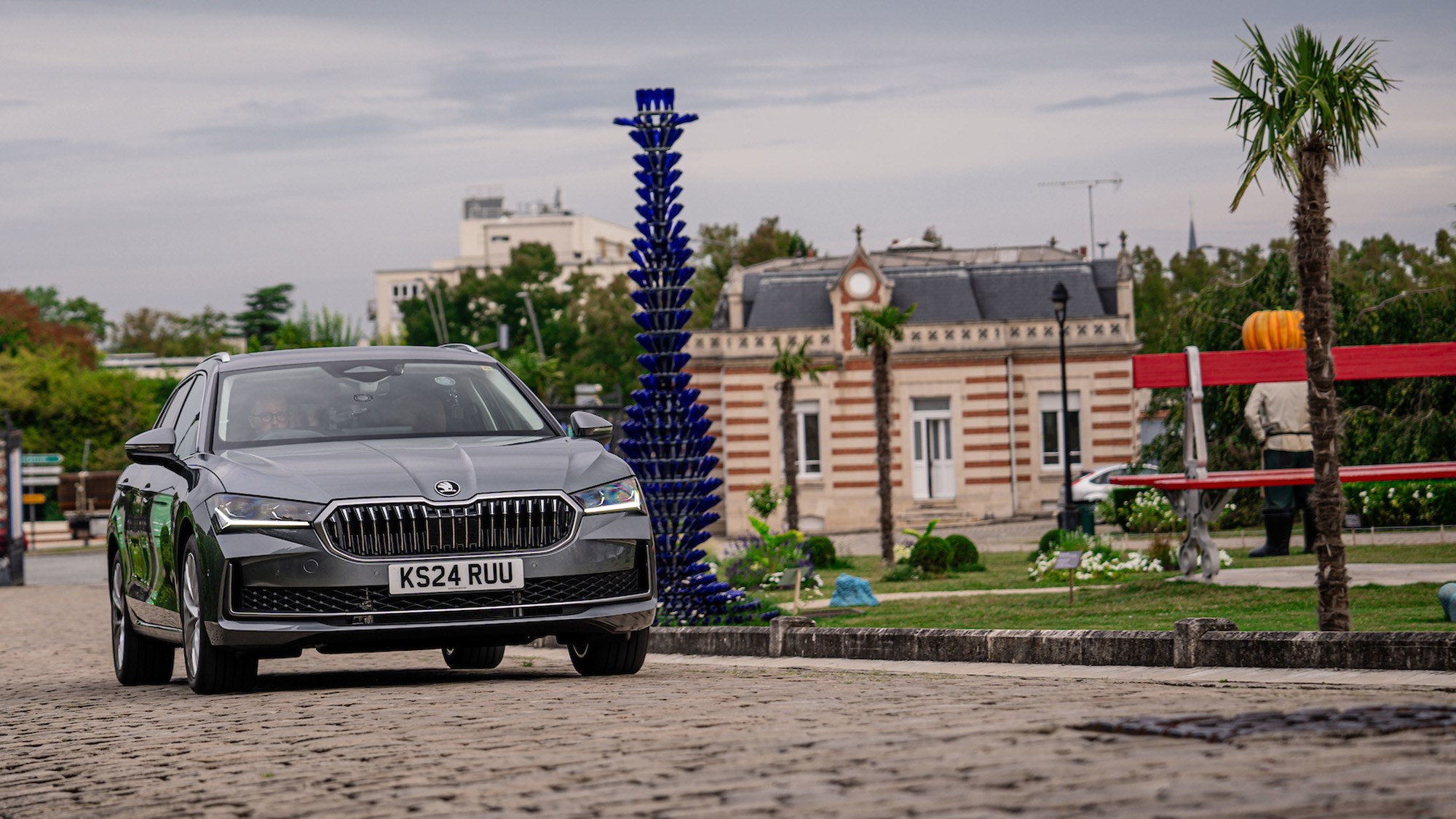
Joining the autoroute, and settling down for the joy of France’s free-flowing motorway network with its drivers who understand lane discipline, I have a quick play with the the 13.0-inch infotainment touchscreen. It’s quick and easy to operate, is probably the best system used across the Volkswagen Group of brands, and unlike my own Enyaq, works flawlessly without crashing.
Positive points are the seats, which really are supportive and quite brilliant on a long run. As well as offering massaging, they’re heated and cooled. The low overall noise levels add to the sense of luxury – so much so that my usual coffee stop in Dijon is passed in a state of zen-like calm, and I’m almost in Reims by the time I need any sort of comfort break. Notching down the climate control as it heats up outside using the car’s ‘Smart Dials’ is also a pleasure – there’s no unseemly wrestling with the touchscreen to get the perfect interior ambience.
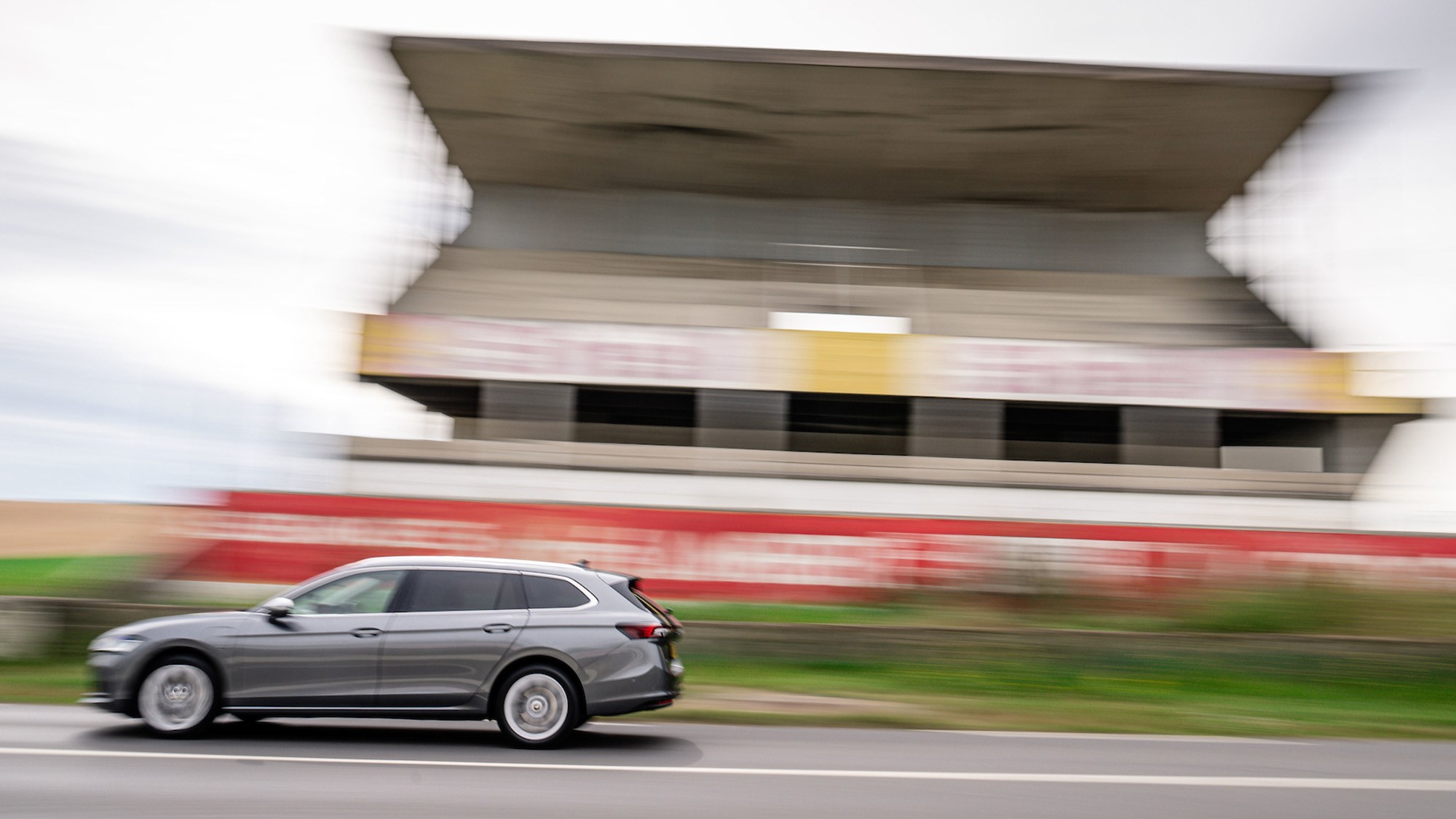
I do like those ‘Smart dials’. Perhaps it’s a function of my age, but I’ll always prefer interfacing with my car using tactile controls instead of stabbing at a cold, dead screen, or yelling at a non-undertanding voice assistant. I suspect, the Superb’s customer base rather sees it that way, too. Hang on, I am the Superb’s traditional customer.
As well as a quick stop for Champagne in Reims, I sneak over to the Reims-Gueux racing circuit to take a look at what 20th and 21st century petrolhead Grand Tourers have adopted as an essential stop off point for a photocall. Although the grandstands for the old Grand Prix circuit have been restored over the past decade, they have been done so sympathetically, and still display a beautiful weathering that patinates most hoardings across this great country.
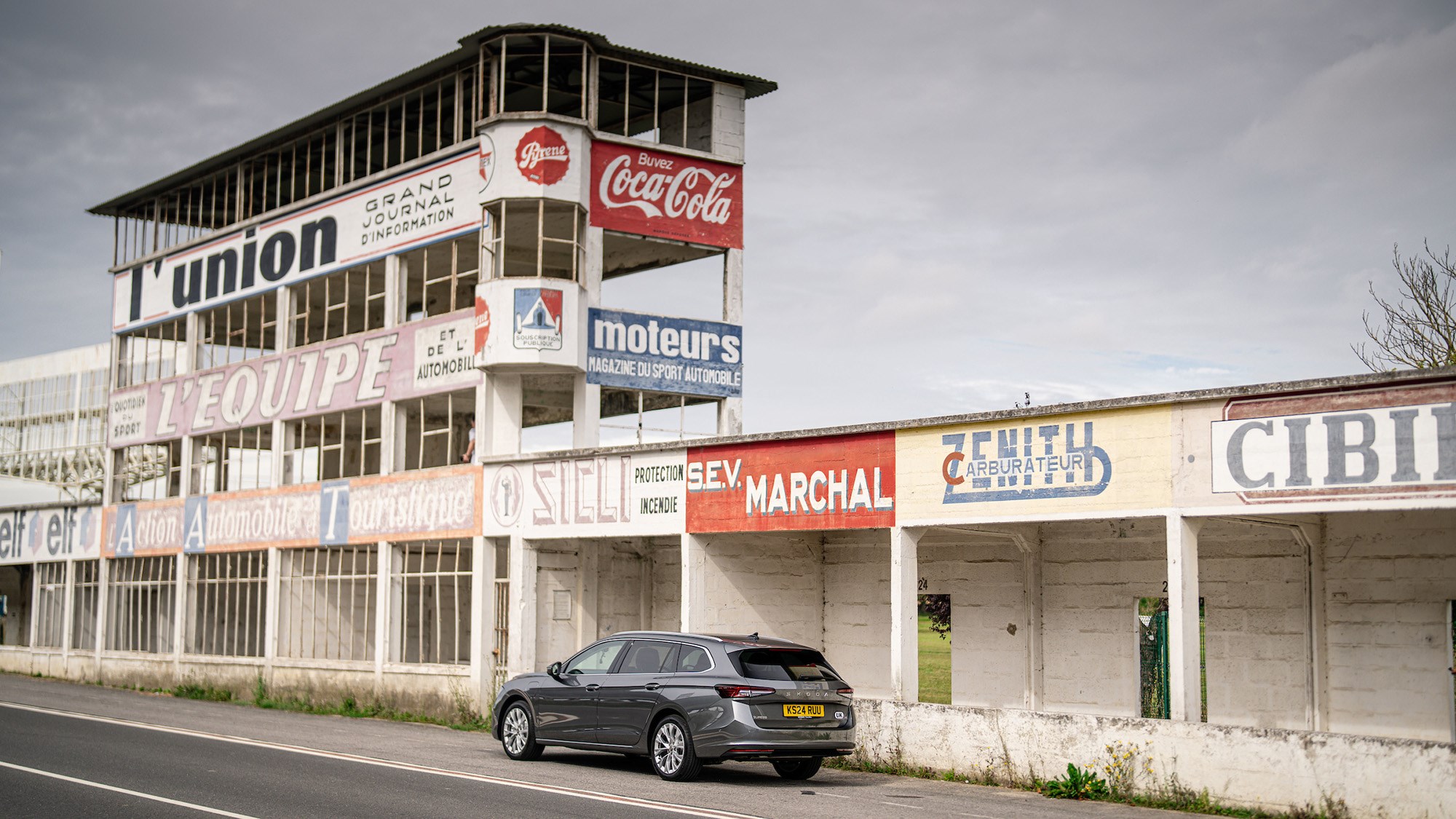
Before you buy
After Reims, there’s the inevitable pre-Calais comedown of a return trip to the UK. That’s not to say I don’t love Blighty, but a Grand Tour is all about the liberating feeling of freedom and space, which is not something in abundance in the UK. A quick stop-off on one of the many service stations on the Autoroute des Anglais reveals something else, too – I’ve been averaging 59mpg. Not too shabby at all.
Inevitably as Calais looms ever closer, I start to consider PHEV rivals to the Superb. The most obvious one is the Volkswagen Passat, which is not so much similar, but almost identical – and if you’re going for the plug-in hybrid, it comes down to a split decision based on brand values. There’s also the Peugeot 508 SW PHEV, more expensive BMW 330e Touring and the newly re-introduced Volvo V60.
Verdict
Grand Tour over and with the Superb iV now back on UK shores, it’s time to consider whether I would recommend it. There’s a lot to praise it for, not least its excellent ground covering ability, refinement at speed, and in the case of this plug-in hybrid version, diesel-like fuel economy. It’s also tax efficient, and should you be able to keep it charged up using cheap overnight domestic electricity, sensationally cheap to fuel.
Yes, in standard form without options, you’re looking at between £40 and £50k, but as it has so few rivals for the money, that seemingly high price ceases to be a problem. I’d take one over the Passat, as I prefer the interior design and controls of the Skoda, while as much as I like the look of the Peugeot 508 SW, it doesn’t have the same depth of engineering.
That leaves the elephant in the room, which is the BMW 330e Touring. It might not be as accommodating or as comfortable as the Skoda, but it is better to drive and has a slicker infotainment set-up. For anyone racking up the miles, especially considering the Skoda has such a big battery, this is the one to go for – but I can completely understand plumping for the BMW if the lure of the Furka Pass proves too hard to resist.
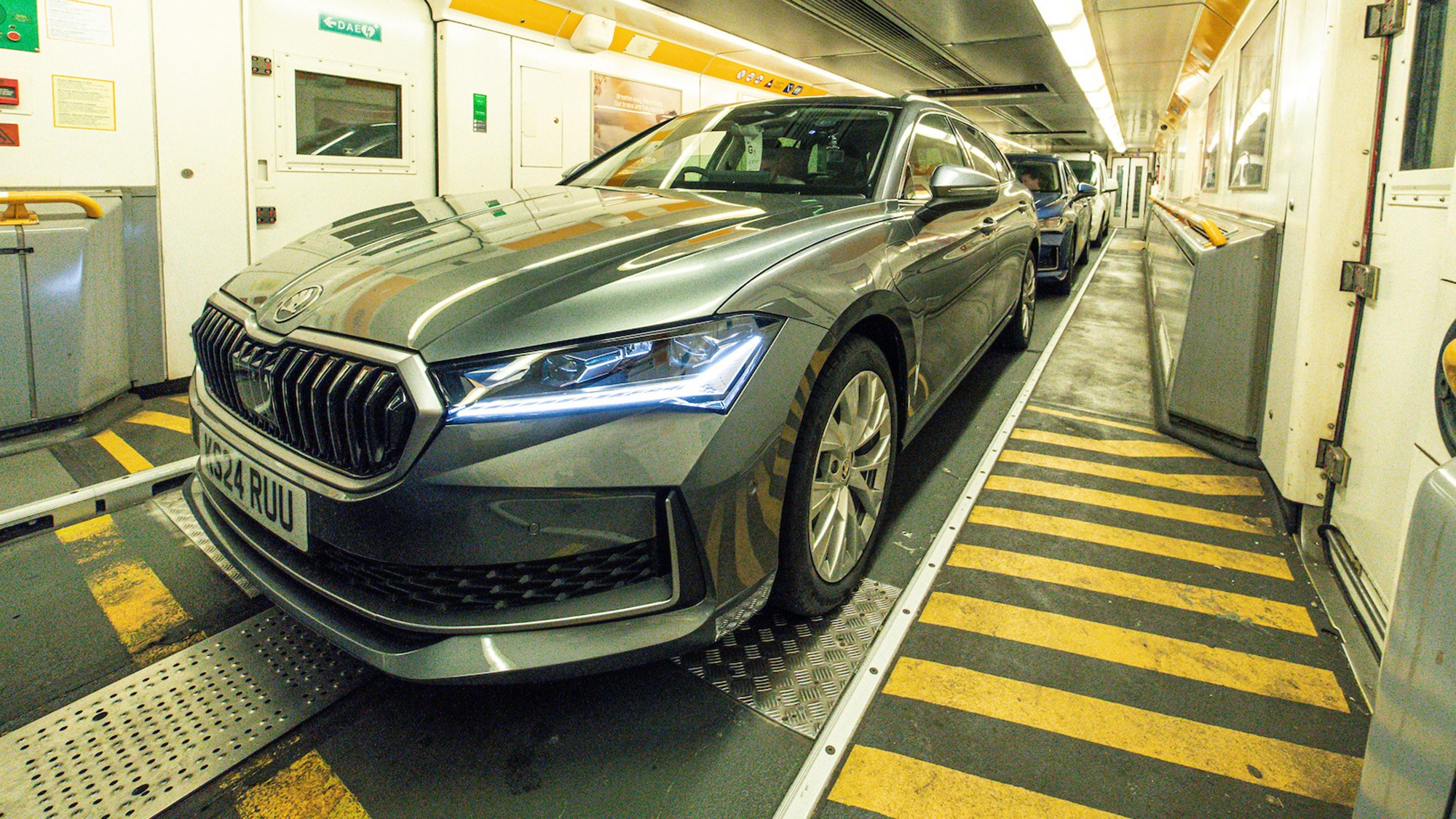
Photography: Macolm Griffiths